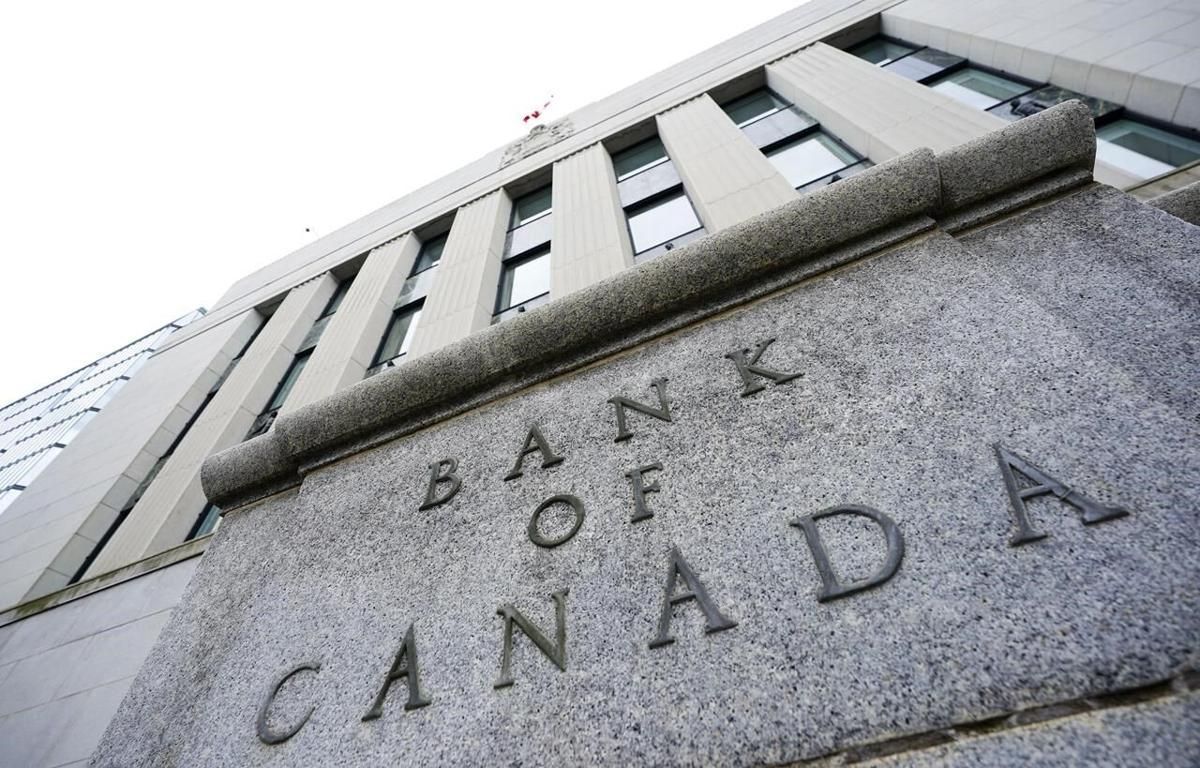Bank of Canada Maintains Overnight Rate Target and Unveils New Market Operations
Nest Mortgage • April 15, 2020
The Bank of Canada today maintained its target for the overnight rate at ¼ percent, which the Bank considers its effective lower bound. The Bank Rate is correspondingly ½ percent and the deposit rate is ¼ percent. The Bank also announced new measures to provide additional support to Canada’s financial system.
The necessary efforts to contain the COVID-19 pandemic have caused a sudden and deep contraction in economic activity and employment worldwide. In financial markets, this has driven a flight to safety and a sharp repricing of a wide range of assets. It has also pushed down prices for commodities, especially oil. In this environment, the Canadian dollar has depreciated since January, although by less than many other currencies. The sudden halt in global activity will be followed by regional recoveries at different times, depending on the duration and severity of the outbreak in each region. This means that the global economic recovery, when it comes, could be protracted and uneven.
The Canadian economy was in a solid position ahead of the COVID-19 outbreak, but has since been hit by widespread shutdowns and lower oil prices. One early measure of the extent of the damage was an unprecedented drop in employment in March, with more than one million jobs lost across Canada. Many more workers reported shorter hours, and by early April some six million Canadians had applied for the Canada Emergency Response Benefit.
The outlook is too uncertain at this point to provide a complete forecast. However, Bank analysis of alternative scenarios suggests the level of real activity was down 1-3 percent in the first quarter of 2020, and will be 15-30 percent lower in the second quarter than in fourth-quarter 2019. CPI inflation is expected to be close to 0 percent in the second quarter of 2020. This is primarily due to the transitory effects of lower gasoline prices.
The pandemic-driven contraction has prompted decisive policy action to support individuals and businesses and to lay the foundation for economic recovery once containment measures start to ease. Fiscal programs, designed to expand according to the magnitude of the shock, will help individuals and businesses weather this shutdown phase of the pandemic, and support incomes and confidence leading into the recovery. These programs have been complemented by actions taken by other federal agencies and provincial governments.
For its part, the Bank of Canada has taken measures to improve market function so that monetary policy actions have their intended effect on the economy. This helps ensure that households and businesses continue to have access to the credit they need to bridge this difficult time, and that lower interest rates find their way to ultimate borrowers. The Bank has lowered its target for the overnight rate 150 basis points over the last three weeks, to its effective lower bound. It has also conducted lending operations to financial institutions and asset purchases in core funding markets amounting to around $200 billion.
These actions have served to ease market dysfunction and help keep credit channels open, although they remain strained. The next challenge for markets will be managing increased demand for near-term financing by federal and provincial governments, and businesses and households. The situation calls for special actions by the central bank. To this end, the Bank is furthering its efforts with several important steps.
Under its previously-announced program, the Bank will continue to purchase at least $5 billion in Government of Canada securities per week in the secondary market, and will increase the level of purchases as required to maintain proper functioning of the government bond market. Also, the Bank is temporarily increasing the amount of Treasury Bills it acquires at auctions to up to 40 percent, effective immediately.
The Bank is also announcing today the development of a new Provincial Bond Purchase Program of up to $50 billion, to supplement its Provincial Money Market Purchase Program. Further, the Bank is announcing a new Corporate Bond Purchase Program, in which the Bank will acquire up to a total of $10 billion in investment grade corporate bonds in the secondary market. Both of these programs will be put in place in the coming weeks. Finally, the Bank is further enhancing its term repo facility to permit funding for up to 24 months.
These measures will work in combination to ease pressure on Canadian borrowers. As containment restrictions are eased and economic activity resumes, fiscal and monetary policy actions will help underpin confidence and stimulate spending by consumers and businesses to restore growth. The Bank’s Governing Council stands ready to adjust the scale or duration of its programs if necessary. All the Bank’s actions are aimed at helping to bridge the current period of containment and create the conditions for a sustainable recovery and achievement of the inflation target over time.
Information note
The next scheduled date for announcing the overnight rate target is June 3, 2020. The next full update of the Bank’s outlook for the economy and inflation, including risks to the projection, will be published in the MPR on July 15, 2020.

Who Knew? 🔮 As expected, or easily predicted, the Bank of Canada formally announced a 0.50% cut to the overnight rate earlier this morning. (click for official announcement) This adjusts Prime Rate down to 5.95%, the lowest level we’ve seen in the past two years, and demonstrates a clear signal that the BoC is doing everything possible to kick-start economic growth. A Green Light to Borrow Governor Tiff Macklem’s message is straightforward: borrowing just got cheaper, and more cuts could be coming. With inflation settling back around the 2% target, he’s effectively giving Canadians the go-ahead to take advantage of lower rates, even if average core inflation is still a touch above the goal. "We want to see growth strengthen," Macklem said, and he’s determined to make it happen.

As anticipated, this week's Bank of Canada announcement kept the overnight rate unchanged. The Bank expects inflation to hover around 3% and drop below 2.50% later this year, aiming to reach the target of 2% by 2025. Wednesday marked the sixth consecutive "no change" announcement, although speculation persists that we should see rates, specifically Prime, drop by .75-1.00% by the end of 2024. Despite no movement being widely anticipated, it is disappointing that further insight into a housing market reset has now been postponed until the next scheduled decision on June 5th. With unemployment at a 26-month high and GDP underperforming, these are two indicators contradicting the notion of rates remaining "higher for longer".

In light of theIn the wake of today's Bank of Canada (BoC) announcement maintaining the overnight rate at 5.00%, Nest brings you a comprehensive overview of the current mortgage landscape. Prime Rates and payments for variable lending products remain unchanged following this non-rate event, leaving borrowers in a familiar position. While the BoC provided limited insight into the potential timing of interest rate cuts, consensus suggests we might witness the first rate cut materializing in June of this year. Despite the ongoing commitment to restoring price stability for Canadians, a message consistent since July 2023, it is essential to highlight key facets of today's mortgage landscape: 1. GDP: Canada's 4th Quarter (2023) GDP surprised with a 1% annualized growth rate, surpassing expectations. However, beneath the positive headline lies a complex narrative. The growth coincided with a population surge of approximately 430,635 people, equating to a 4% annualized growth rate. On a per capita basis, Canadians appear to be experiencing the intended tightening, a trend persisting in 5 of the last 6 quarters. Per capita GDP adjusted for inflation is now lower than Q4 2014, a noteworthy observation challenging the notion of an economy in need of restraint. 2. Labour: In January, Canada's Labor Force added 37,000 jobs, outperforming expectations, leading to a decline in the unemployment rate to 5.7%. However, a closer examination reveals some finer details. Despite adult population growth of 125,500 people, the labor force expanded by a much smaller 18,200. Additionally, the participation rate for the age group of 15-24 witnessed a concerning decline of 130,000 persons. Without this decline, the unemployment rate would be 0.5% higher. 3. Inflation: Canada's Headline Inflation Number registered below expectations at 2.9%. In the ongoing battle against inflation, there has been significant progress since CPI peaked at 8.1% in June 2022, now comfortably below the 3% threshold. Core measures, though still elevated at 3.4% and 3.3% respectively, are expected to ease further as higher rates prompt more mortgage holders to renew into lower interest rate mortgages. 4. Global Considerations: Economic performance and Bond yields have been influenced by global factors. While global economic growth slowed in the fourth quarter of 2023, U.S. GDP growth remained surprisingly robust and broad-based. Inflation in the U.S. and the Euro area continued to ease, accompanied by a notable rise in equity markets. What's Next? The looming question pertains to the BoC's eventual decision to ease interest rates. The per capita statistics and the intricate state of the Canadian economy are interwoven in unpredictable ways, with the wildcard being the surge in population growth. Inflation, triggered by demand exceeding supply, faces uncertainties on how pent-up demand will respond to rate cuts. The surge in Canada's population, almost double the pre-COVID growth, plays a crucial role in shaping the trajectory of the BoC's decisions. Since October 2023, significant drops in fixed mortgage rates have been observed, likely to persist gradually as markets anticipate rate cuts by the BoC. Current odds indicate at least one rate cut by this summer, and two more to follow before year-end ( market survey ). As we approach the Spring Market, optimism and demand gain momentum. If you've adopted a 'wait and see' approach, now is the opportune moment for a conversation. Preparing before the first rate cut is pivotal, as optimism will inevitably transition to confidence, and housing market activity will return to normal levels. Next BoC Announcement: April 10, 2024.

In light of the softening of the Canadian economy, the Bank of Canada opted to maintain its overnight rate for the fifth consecutive time earlier this month leaving Prime and variable product pricing unchanged. While "financial conditions have eased," the Bank also highlighted persistent inflationary pressures stemming from ongoing wage growth and robust immigration. This is exacerbated by the housing supply failing to keep pace. The Bank continues to emphasize the need for restrictive policy to bring inflation back within target, yet “the market” is no longer buying it! With subdued core inflation pressures, declining GDP and house prices, and a softening labour market, it is inevitable that the Bank will need to reduce rates to avoid severe economic consequences. Market consensus is the rate-tightening cycle has passed and both new and existing mortgage holders can look to much needed rate reprieve in 2024. Bond yields have dipped more than -100bpts since October, leading to lower fixed rates. Conventional 5-year fixed rates are offered at 5.69-5.99%, with a noteworthy offer of 4.99% for default-insured purchases. As fixed rates have only dropped -50bpts over the same period, expect further discounting in the weeks ahead. THE (MORGAGE) YEAR THAT WAS, AND WHAT LIES AHEAD?

Governor Tiff Macklem and the Bank of Canada (BoC) made the expected decision this week: no change to the Overnight Rate [no change to Prime] . While the Bank has surprised markets in the past, this week’s hold was widely anticipated. What makes this instance unique is the growing body of evidence showing that higher interest rates are leaving their mark on the economy... Unprecedented Data Points: Second quarter GDP figures fell significantly below expectations, contracting by 0.2% compared to anticipated growth of 1.2% to 1.5%. Despite substantial population growth, the economy should be thriving, but it's not. Time Lag of Rate Impact: Generally, interest rates take over 12 months to exert their full influence. In the last year, we've seen a total increase of 1.25% in Q2 2022 and another 1.75% in rate hikes in Q3 2022. The July 2023 GDP numbers are showing the impact of these hikes, with sluggish growth. Consumption and Employment Challenges: Total retail sales have plateaued, especially when adjusted per capita, reflecting the weight of higher interest rates on consumer spending. The unemployment rate has climbed by 0.5% in the last three months, further complicating the economic picture. What does this mean for mortgages and rates? Inflation is likely to persist at elevated levels for some time, but it won't prompt the BoC to act unless accompanied by a rebound in GDP growth and spending. As disappointing economic data advances expectations of rate cuts, we may experience downward pressure on fixed interest rates sooner than previously forcasted. Experts are nearing a consensus that the BoC has reached its ceiling on rate tightening, with inflation as the last obstacle before easing. In these uncertain times, we are here to assist. Whether you're considering home buying or refinancing for improved cash flow, we can provide the answers tailored to your needs. Please don't hesitate to reach out to discuss your mortgage needs!





